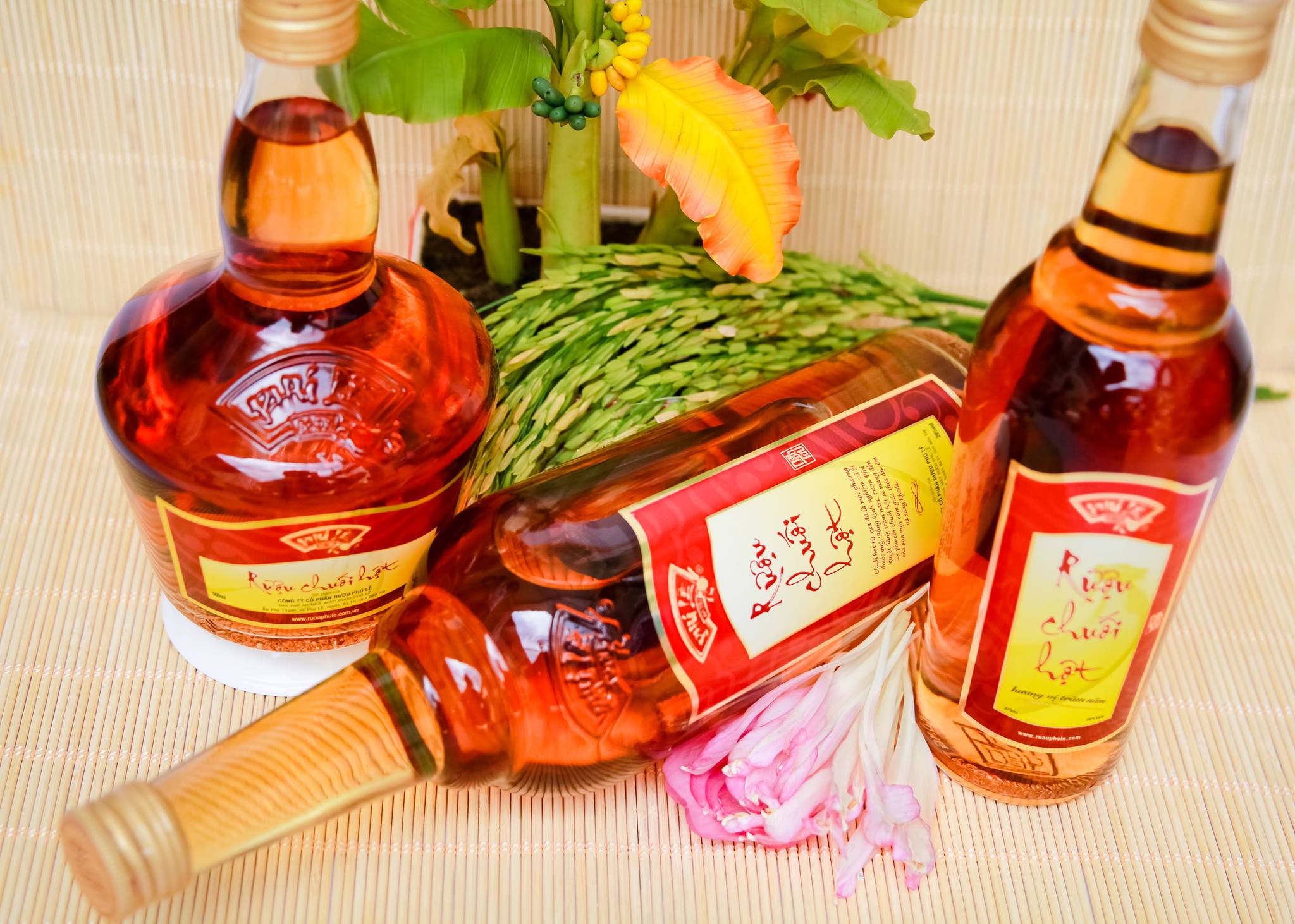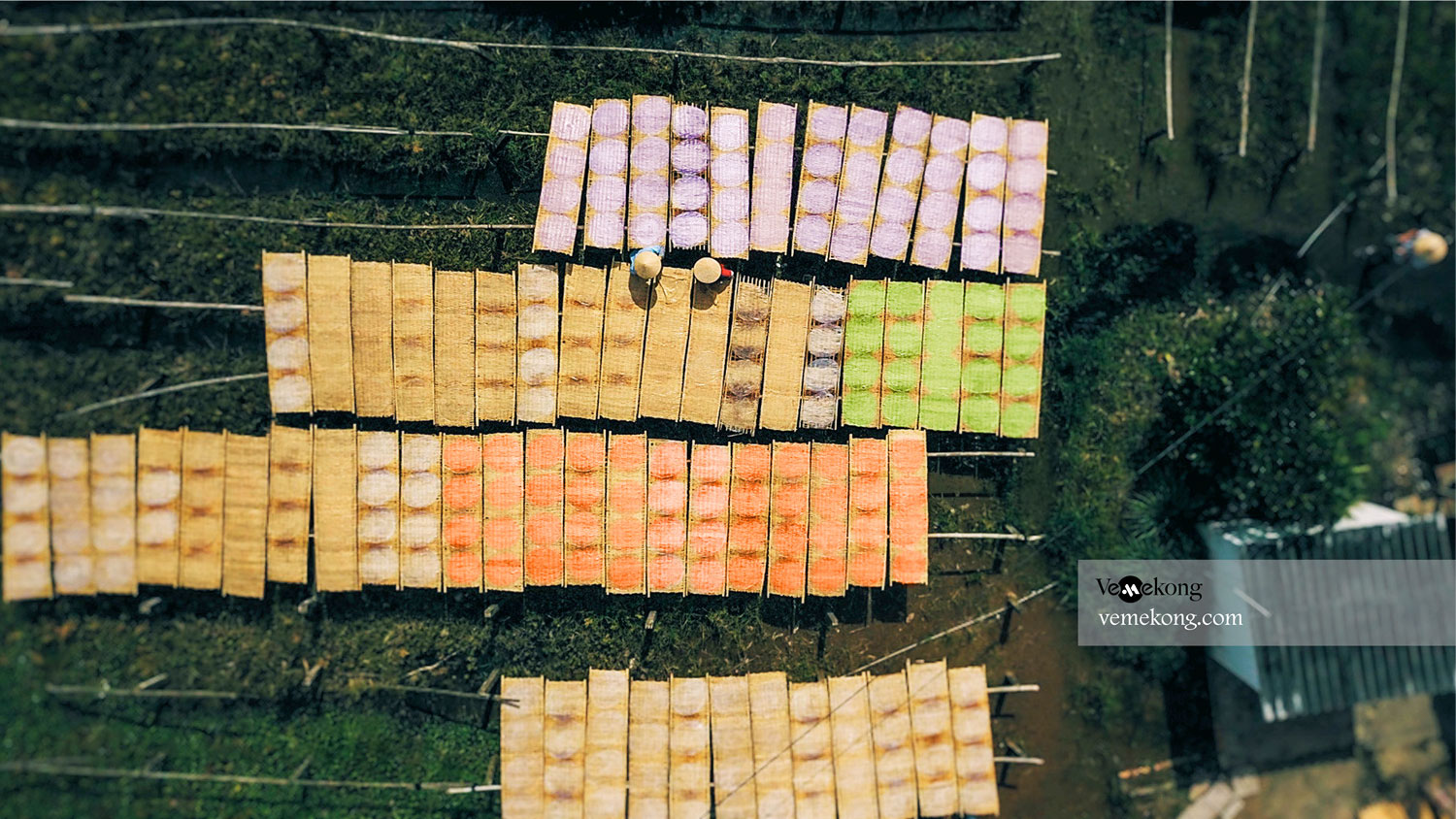Famous wine in the South cannot fail to mention Xuan Thanh wine, Go Den wine and never forget Phu Le wine – a wine imbued with cultural traditions in the Mekong Delta, known as the first famous wine in Ben Tre
By Thomas Vietnam at vemekong.com | All Best Foods & Restaurants in Ben Tre
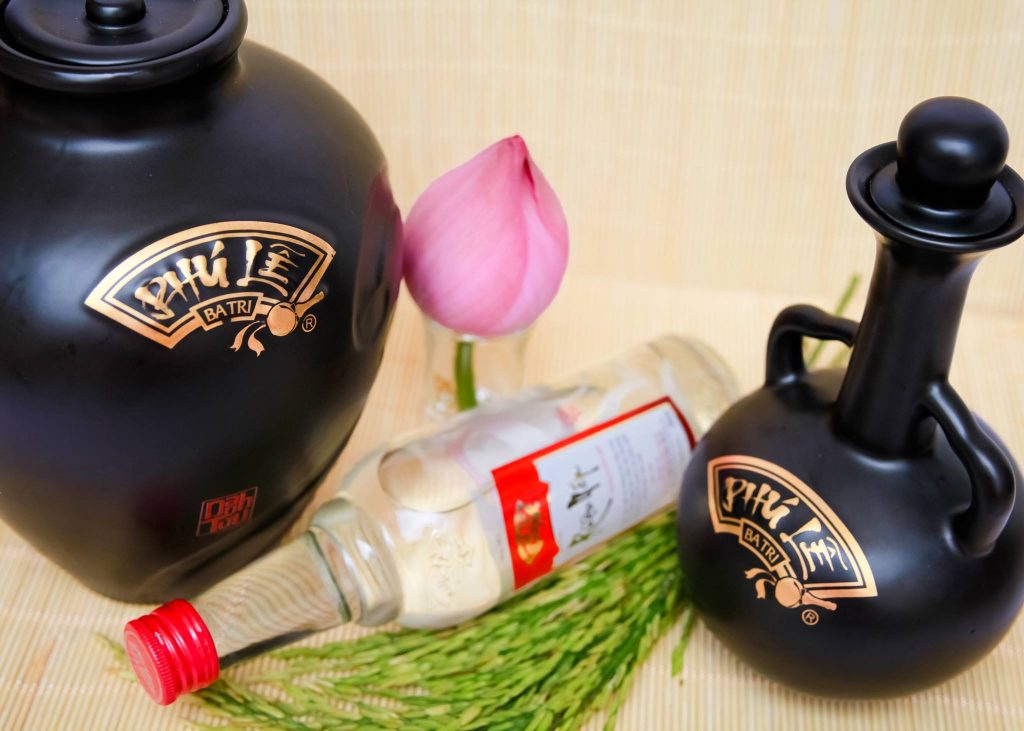
1. Better to Know as a Food Lover
Find them: Ben Tre city.
Best time: Dusk-Dawn
Don’t miss: Phu Le Rice Wine
Local’s pick: Phu Le Rice Wine Village Shop
Tourist’s pick: Supermarket in Ben Tre
Blog: https://vemekong.com/phu-le-rice-wine-ben-tre/
Facts: Famous wine in the South cannot fail to mention Xuan Thanh wine, Go Den wine and never forget Phu Le wine – a wine imbued with cultural traditions in the Mekong Delta, known as the first famous wine.
2. Better to Know Phu Le Rice Wine
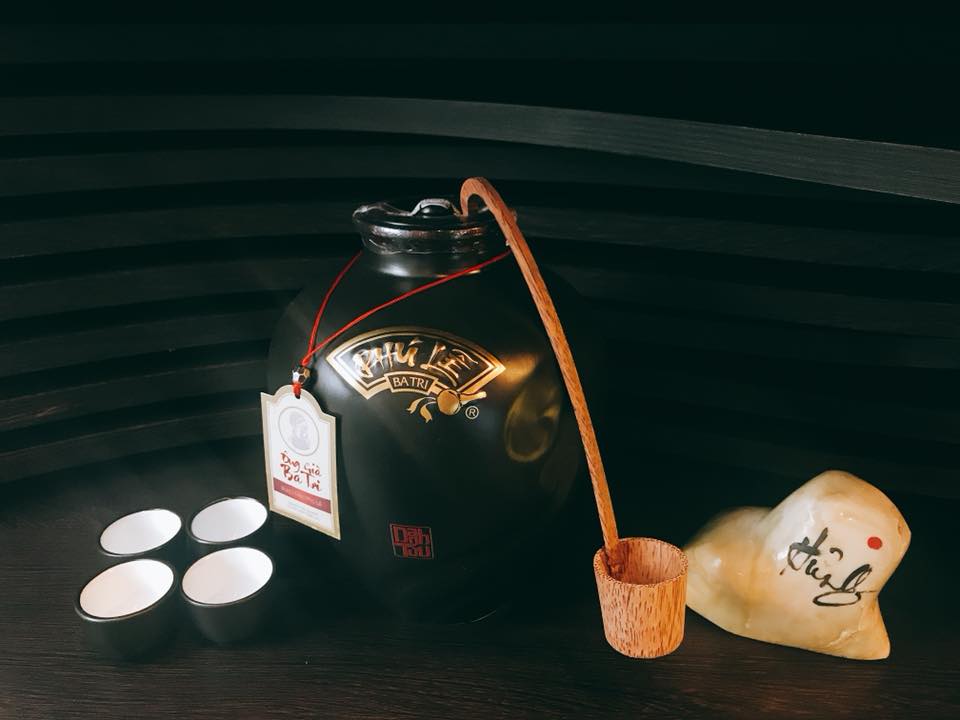
Phu Le rice wine is the pride of the land of Ben Tre, a precious product passed down by our ancestors. Therefore, not only the people of Ben Tre preserve it, but everyone also cherishes and constantly develops the quintessence of Vietnamese wine to international friends. Many people say that Phu Le wine is delicious because of the quintessential winemaking technique, so it has a strong, delicious and heavy taste. Then many people also said that Phu Le rice wine is delicious because the tradition of Phu Le commune is purely agricultural and has produced precious ingredients: glutinous rice, wine yeast, and well water. In fact, whatever the cause, the good wine explanation is correct.
3. Phu Le Rice Wine in Ben Tre
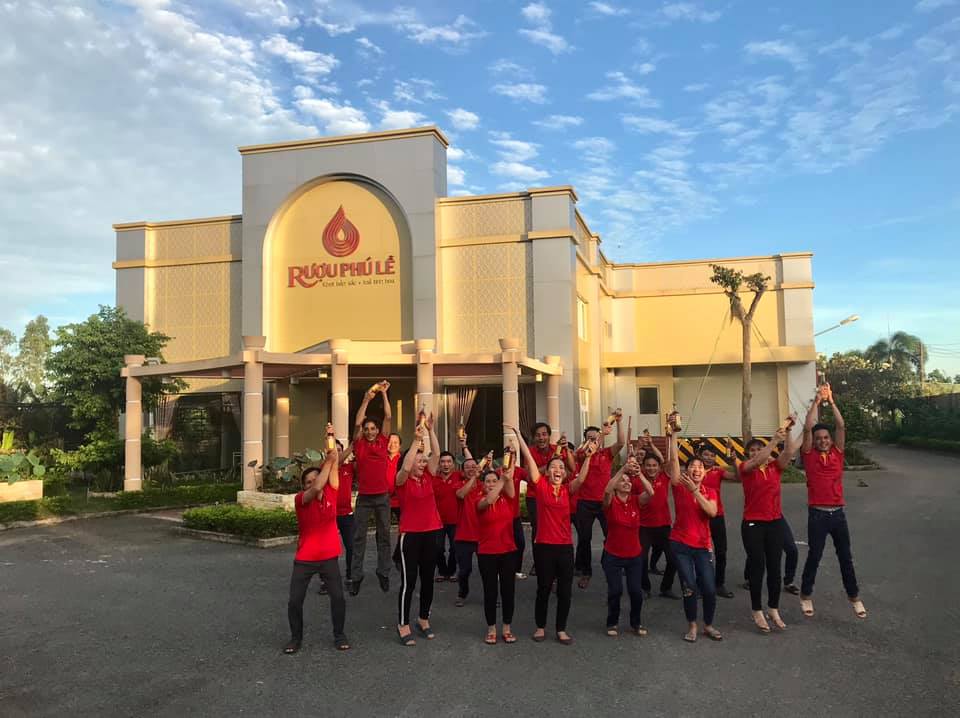
Wine making is not only a livelihood for families in Phu Le village but also a traditional cultural activity, imbued with the cultural identity of a land. With them, each grain of sticky rice, each pot of water, each yeast ball is carefully selected. The selected rice must be long-lasting sticky rice grown on local land. The water must be fresh and cool from the village well. And the yeast must be made from 36 medicinal herbs such as cinnamon, anise… plus laksa leaves, longan…. Standard quality ingredients are 50%, the rest is cooking technique. The most experienced person, usually the elderly in the house or skilled women who have been trained in the profession. Cook glutinous rice into rice, stir until your hands feel warm to the touch, then sprinkle with crushed yeast. Use both hands to spread the yeast into the rice and put it in a clean bowl covered with plastic wrap and store it in a cool, dry place such as under the bed, or in the closet. After three days of fermentation, add water according to the appropriate ratio. If you want to eat rice wine, before pouring water in, extract the sticky rice into a small jar. All remaining ingredients will continue to incubate for seven days. At this point, the rice is cooked, just bring it to cook. When cooking, you must use large firewood, simmer the fire so that the steam rises and turns into fragrant drops of wine. Cooking wine is a process, it takes time and care to make it best. That’s also why these stitches are usually done by women’s hands.
4. How to Make Phu Le Rice Wine
Step 1: Choose ingredients
The selection of ingredients for winemaking is also an extremely important step. It directly determines the quality of the wine produced later.
When choosing rice wine ingredients, you need to be careful when choosing rice and yeast.
There are two types of rice: plain rice and glutinous rice. You should choose rice grains that have had the husk removed and the bran still intact. Because rice has bran skin, a lot of vitamin B1 is very good for health and makes wine more delicious.
Depending on the needs of use, people use plain or sticky rice. Because cooking wine with glutinous rice, the finished wine will be very delicious, bold, sweet in the mouth, feeling warm. As for plain rice, it is not as delicious but the price is cheap.
The selection of yeast cake depends on the taste and experience of the winemaker. You can choose from yeast, herbal medicine or probiotics. Note to choose quality enamel, not moldy, dirty. Should choose to buy yeast at reputable establishments or acquaintances to avoid fake yeast.
Step 2: Cook rice wine
Cooking rice wine is also very simple. As long as you know how to cook everyday, you can cook. First of all, you have to soak the rice and wash all the dirt in the Rice and make the rice soft and swollen, then pour it into a big pot to cook rice wine.
Depending on the needs of family use or production for sale, you can cook less or more. To cook rice, the wine is not crushed and mushy, normally the ratio of rice and water will be 1:1. The purpose is to ripen rice grains, gelatinize rice starch to help microorganisms easily ferment alcohol.
Step 3: Mix yeast
You remove the husk. Then puree or crush the yeast. Wait for the rice to cool down, then sprinkle the yeast evenly on top. Then mix well so that the yeast covers the glutinous rice grains.
Step 4: Fermentation
Fermentation has 2 stages: dry yeast fermentation and wet yeast fermentation.
Stage 1: Dry incubation
This is the stage of fermenting rice wine in an anaerobic environment. Put the sticky rice sprinkled with yeast into a large-capacity glass or ceramic jar with a tight-fitting lid. After about 4-5 days, the rice cooker will automatically wake up with water and smell of wine
The suitable temperature for successful fermentation of rice wine is about 20-25 degrees Celsius. Cold weather can be overcome for brewing near the stove. If the weather is hot, but the production place does not have air conditioning, the wine will sour quickly and the yield will be low.
Stage 2: Wet tempering
When the dry incubation period is complete. You bring fermented rice wine and add water. For every 10 kg of rice, you will add 15 liters of water to make the fermentation process complete, the alcohol turns off the starch and sugar.
Wet incubation for 1-2 weeks. Time depends on the weather. When you taste the rice and water, you find it spicy, the water is clear and can be distilled.
Step 5: Distilling Alcohol
Pour all the water and wine into the pot. If you want productivity and resistance, you can just squeeze the water out. When distilling, it is necessary to pay attention to the temperature. Avoid fire or sudden spillage. It will make the wine bitter, cloudy and difficult to drink.
First distillation: With the first distillation, we will obtain the original alcohol, which is quite heavy with an alcohol content of 55-65 degrees. This type of alcohol often has a high amount of Andehyde, which is directly harmful to health, and people who drink it are very susceptible to alcohol poisoning. Therefore, the first distilled alcohol should not be used for drinking, but should only be used for soaking.
Second distillation: Continuing the second distillation, we will be able to distill the middle alcohol. Usually this wine has an alcohol content of 35 to 45 degrees, this wine will be used to drink hot or will be distilled, stored or marketed.
Third distillation: Continue distilling, this time we will obtain a top wine with a low alcohol content, a slightly acidic taste and no taste of alcohol anymore. This wine is only used to mix with the base wine. The alcohol is obtained from the first distillation and then distilled again to lower the strength of the base alcohol. At this point, the same alcohol will be obtained as the second distilled (middle wine). Then store, hoard or sell.
5. Pro tips:
Here are our tips for easing your mind (and stomach) around food-handling environments that you may not be used to.
Make sure the food is freshly cooked. If you’re eating hot street food, it’s always safest (not to mention more delicious) to eat food you can see being cooked to order.
Look for lines and busy stalls. Busy street food stalls are an indicator of popularity, and their high turnover rate means the food is never sitting out for hours and developing dreaded bacteria. Yes, long lines can be discouraging when you’re hungry after a full day of exploring, but it’s not worth the risk of grabbing precooked food from the empty spot next door.
Eat when the locals are eating. The last and most important element here is when to eat. You’re likely already on a weird eating schedule while you’re traveling, but it’s important to try and adjust to the eating times of where you are. A bowl of pho might be lunch for Americans, but it’s breakfast for the Vietnamese. This ensures that you’re eating freshly cooked food and that you can find the best and most popular places to eat.
If you can’t drink the water, then you can’t eat the salad. Most people get so hung up on not drinking the water or skipping ice in drinks that they don’t think about all of the other ways in which water is used in food service. Fruits and vegetables tend to be washed with tap water in most places, rather than the filtered water that locals drink—or sometimes it’s not washed at all. If you’re really craving some produce, try fruits you can peel or cooked veggies.
Trust your gut. If you’re unsure about the food or the way that it’s being prepared, then keep moving. Eating street food all over the world doesn’t make you an expert. Every stall and every country are different, and sometimes the rules can be harder to follow. When something doesn’t look, smell, or feel right, don’t eat it! Trust your judgment. Chances are that there’s another spot close by that’s making something more delicious.
Must-Eat Foods & Restaurants in Can Tho: Co Ut’s Cong cake, Ut Dzach Fine Rice Vermicelli, Thanh Van Grilled Pork Sausage, Crab Noodle Soup At Floating Market, Scorched Rice with Caramelized Fish Sauce, 7-Toi’s Duck Meat Pancake, Banh Mi Thuy, Banana Blossom Salad, Fried Spring Rolls, Fresh Spring Rolls, Fetal duck egg (balut), Honeycomb Cake, Mini Sticky Rice Cake, Cassava Silkworm Cake, Grilled Banana Wrapped in Sticky Rice, Khmer-style Bun Goi Da Soup, Egg Coffee, Con Son Grilled Snakehead Fish, Bun Mam – Fermented Fish Noodle Soup, Lau Mam – Fermented Fish Hotpot, Grilled Snails with Pepper, Magenta Sticky Rice Cake, Duck cooked with Fermented Tofu, Rice Noodle Pizza, Vegetarian Noodle Soup, Snails Stuffed With Pork…
Must-Eat Foods & Restaurants in Chau Doc: Chau Doc Fish Noodle Soup, Sugar Palm Fruit, Basa Fish Hot Pot, Mam (Fermented fish), Phu Huong Beef Noodle Soup, Broken Rice with Pork Chop, Long Xuyen Broken Rice, Nui Cam Pancake, O Thum’s Chicken Grilled with Lime Leaves, Stir-fried Shrimp with Sesbania Flower, Sweet & Sour Soup with Siamese Mud Carp Soup & Sesbania Flower, Caramelized & Braised Catfish, Grilled Rice-field Rat with Salt and Chili…
Must-Eat Foods & Restaurants in Soc Trang: Pia Cake, Cong Cake (Banh Cong), Bun Nuoc Leo Soc Trang’s Noodle Soup, Soc Trang’s Bun Goi Da Soup, Duck Noodle Soup with black Pepper, Curry Noodle Soup, Grilled Beef on Tile, Khmer-style Tube Cake, Khmer-style Mung Bean Cake (Banh In), Dried Radish (Xa Bau), Stir-Fried Noodles with Seafood (Mi Sua), Soc Trang’s Green Rice Flakes…
Must-Eat Foods & Restaurants in Ben Tre: Phu Le Rice Wine, Ben Tre’s Coconut Candy, Flat Banana, Coconut Rice, Snail Pancake, Sea Snail with Coconut Milk, Coconut Worm, Young Coconut Salad with Shrimp & Pork, Son Doc Puff Rice Paper…
Must-Eat Foods & Restaurants in Cai Be: Puffed Rice Cake…
Must-Eat Foods & Restaurants in Vinh Long: Elephant Ear Fish (fried giant gourami)…
Must-Eat Foods & Restaurants in My Tho: Fried Sticky Rice, Snakehead Fish Rice Porridge, Hu Tieu My Tho (Noodle Soup), Coconut Banana Cake…
Must-Eat Foods & Restaurants in Tra Vinh: Macapuno Coconut, Bun Nuoc Leo Tra Vinh’s Noodle Soup, Tra Cuon’s Sticky Rice Cake…
Must-Eat Foods & Restaurants in Sadec: Sa Dec Noodle Soup, Sadec Crab Hotpot, Lai Vung Spring Rolls, Sa Giang Shrimp Puff Pastry, Lai Vung Tangerine…
Must-Eat Foods & Restaurants in Bac Lieu: Spicy Beef Noodle Soup, Bac Lieu’s Three-striped Crab, White Radish Pies, Bac Lieu Thick Noodles & Creamy Coconut Milk, Bon Bon Pickles…
Must-Eat Foods & Restaurants in Ca Mau: Banh tam ga cay (Silkworm rice cake with curried chicken), Grilled Vop clams with salt and pepper, Grilled Mudskipper Fish, Stone Crab Roast With Salt, Young Bee Salad, Nam Can’s Crab, U Minh Forest’s Honey, U Minh’s Fermented Fish Hotpot…
Must-Eat Foods & Restaurants in Hau Giang: Cau Duc Pineapple, Cai Tac’s Pork Organs Porridge, Hau Giang’s Bronze Featherback Fish Cake…
Must-Eat Foods & Restaurants in Ha Tien: Herring Fish Salad, Spider crab cake soup, Ken Noodle soup, Xoi Xiem (Siamese sticky rice), Steamed Noodle soup, Ha Tien Oyster porridge…
Must-Eat Foods & Restaurants in Rach Gia: Stir Noodle Soup, Kien Giang Fish Noodle Soup…
Must-Eat Foods & Restaurants in Con Dao: Bang nut jam, Vu Nang Snail, Roasted Pork Bread (Banh Mi), Coconut Ice Cream…
Must-Eat Foods & Restaurants in Phu Quoc: Phu Quoc Sim Wine, Phu Quoc Pepper, Phu Quoc fish sauce…
Hopefully, the above tips will help you to come up with a great plan for your adventure in Mekong River Delta, Vietnam. Have a safe trip!
“Sleep less, travel more, respect more” – Thomas Vietnam – Local travel expert.
Thank you
